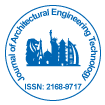Study on Torsion Behaviour of Asymmetric Buildings Under Seismic Loads Using Etabs
*Corresponding Author:
Copyright: © 2021 . This is an open-access article distributed under the terms of the Creative Commons Attribution License, which permits unrestricted use, distribution, and reproduction in any medium, provided the original author and source are credited.
Abstract
Torsion of asymmetric building is one of the most frequent causes of structural damage and failure during strong ground motions. Torsion in buildings during earthquake shaking may be caused from a variety of reasons, the most common of which are irregular distributions of mass and stiffness. This paper deals with the understanding of behaviour of structure under asymmetric plan and hence study the influence of torsional moment effect on the behaviour of structure. The procedure involves the equivalent static analysis, time history analysis and response spectrum analysis as per IS 1893 (Part 1): 2002 for the asymmetric buildings of height G+9 and G+11 and an effort is made to study the effect of seismic loads on them to determine torsional moments, base shear, displacement and time period and their capacity and demand is evaluated using ETABS 9.7.4 version. Torsional irregularity check is done for both the buildings with varying heights. It is observed that the drift values for both the structures were within the permissible limits and are safe against torsion.

 Spanish
Spanish  Chinese
Chinese  Russian
Russian  German
German  French
French  Japanese
Japanese  Portuguese
Portuguese  Hindi
Hindi 
